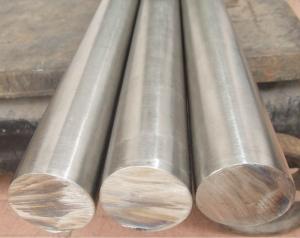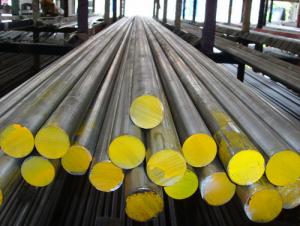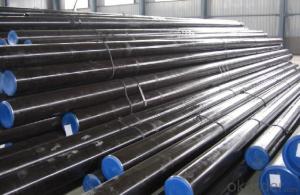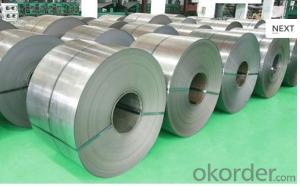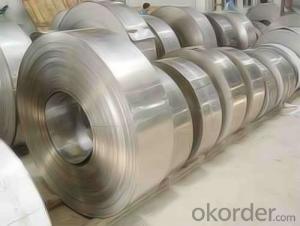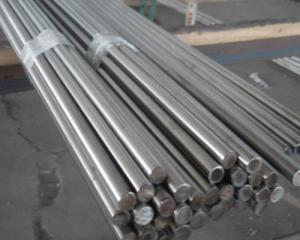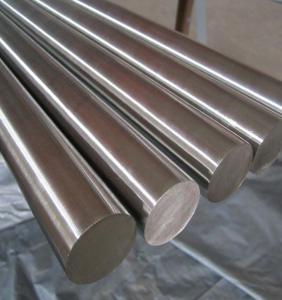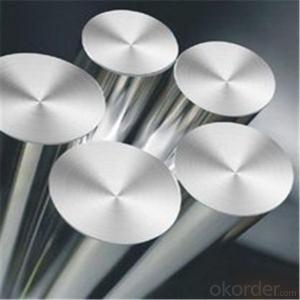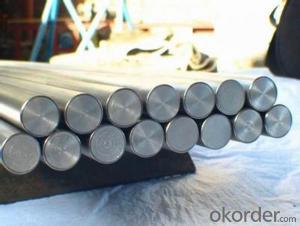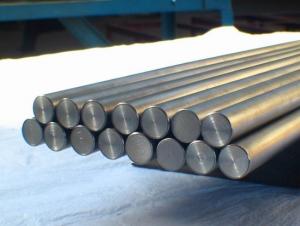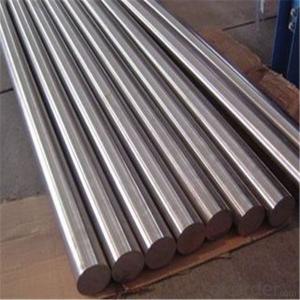Stainless Steel Round Bar
- Loading Port:
- China Main Port
- Payment Terms:
- TT or LC
- Min Order Qty:
- 5 Tons m.t.
- Supply Capability:
- 1000 Tons Per Month m.t./month
OKorder Service Pledge
OKorder Financial Service
You Might Also Like
Stainless Steel Bar
Stainless Steel Round Bright Bar
Hot-rolled Stainless Steel Black Bar
Grades:201、202、301、302、303、304、316、316L、321 etc
|
Diameter (mm) |
weight (kg/m) |
Diameter (mm) |
weight (kg/m) |
Diameter (mm) |
weight (kg/m) |
Diameter (mm) |
weight (kg/m) |
|
2 |
0.025 |
14 |
1.221 |
30 |
5.607 |
50 |
15.575 |
|
3 |
0.056 |
15 |
1.402 |
32 |
6.38 |
55 |
18.846 |
|
4 |
0.1 |
16 |
1.595 |
34 |
7.202 |
60 |
22.428 |
|
5 |
0.156 |
18 |
2.019 |
35 |
7.632 |
65 |
26.322 |
|
6 |
0.224 |
19 |
2.249 |
36 |
8.074 |
70 |
30.527 |
|
7 |
0.305 |
20 |
2.492 |
38 |
8.996 |
75 |
35.044 |
|
8 |
0.399 |
22 |
3.015 |
40 |
9.968 |
80 |
39.872 |
|
9 |
0.505 |
24 |
3.588 |
42 |
10.99 |
85 |
45.012 |
|
10 |
0.623 |
25 |
3.894 |
45 |
12.616 |
90 |
50.463 |
|
11 |
0.754 |
27 |
4.542 |
46 |
13.183 |
95 |
56.226 |
|
12 |
0.897 |
28 |
4.884 |
48 |
14.354 |
100 |
62.3 |
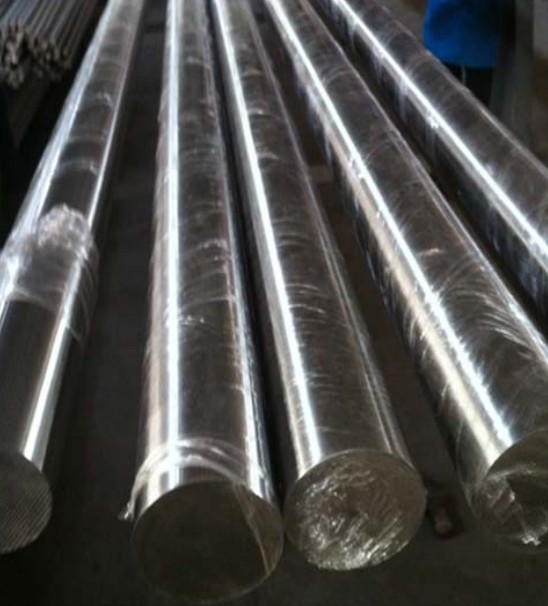
- Q:Can stainless steel bars be used in marine environments?
- Yes, stainless steel bars can be used in marine environments. Stainless steel is highly resistant to corrosion, making it an ideal material for marine applications. The chromium content in stainless steel forms a passive film that protects the metal from rust and corrosion in the presence of water and salt. This passive film is self-healing, which means any damage to the surface will be repaired automatically. Additionally, stainless steel bars can withstand high levels of moisture, humidity, and exposure to harsh weather conditions commonly found in marine environments. Therefore, stainless steel bars are commonly used in marine applications such as shipbuilding, offshore structures, and marine equipment.
- Q:Are stainless steel bars resistant to organic acids?
- Yes, stainless steel bars are generally resistant to organic acids.
- Q:What are the tolerance standards for stainless steel flat bars?
- The tolerance standards for stainless steel flat bars can vary depending on the specific requirements and standards set by the industry or application. Generally, these standards are determined by the dimensions and desired level of precision. Regarding dimensions, tolerance standards typically cover width, thickness, and length. For instance, the width tolerance may range from a few millimeters to a few centimeters, depending on the flat bar's size and purpose. The thickness tolerance can also vary, usually ranging from a few tenths of a millimeter to a few millimeters. The length tolerance is commonly expressed as a percentage or fixed value. Moreover, tolerance standards may encompass straightness, surface finish, and chemical composition requirements. Straightness tolerance sets the maximum allowed deviation from a straight line for the flat bar. Surface finish tolerance defines the acceptable smoothness or roughness level of the bar's surface. The chemical composition tolerance ensures that the stainless steel flat bar meets the required levels of specific elements and impurities. It is crucial to note that different industries or applications may have specific tolerance standards, which could be more stringent than general standards. Therefore, consulting the relevant industry standards or specifications is essential to determine the appropriate tolerance standards for stainless steel flat bars in a particular context.
- Q:Are stainless steel bars suitable for architectural column cladding?
- Indeed, architectural column cladding can be aptly adorned with stainless steel bars. Renowned for its resistance to corrosion, impressive strength, and aesthetic allure, stainless steel stands as a versatile and durable material frequently employed in architectural endeavors. The malleability of stainless steel bars allows for effortless fabrication into an assortment of sizes and forms, rendering them exceptionally suitable for the cladding of architectural columns. Moreover, stainless steel imparts a sophisticated and contemporary appearance that elevates the overall aesthetic of any edifice. Furthermore, its minimal upkeep requirements and ability to endure harsh environmental conditions establish it as a enduring choice for column cladding in architectural undertakings.
- Q:Can stainless steel bars be used in construction?
- Yes, stainless steel bars can be used in construction. Stainless steel is known for its durability, strength, and corrosion resistance, making it a suitable material for various construction applications such as reinforcing concrete structures, supporting heavy loads, and providing structural stability.
- Q:Can stainless steel bars be used in power plant equipment?
- Stainless steel bars are indeed applicable for power plant equipment. Due to its high durability and resistance to corrosion, stainless steel is suitable for various industries, including power plants. In power plants, stainless steel bars are utilized for multiple purposes, such as providing structural support, piping, heat exchangers, and turbine components. The exceptional corrosion resistance of stainless steel guarantees the equipment's ability to endure challenging operating conditions, including high temperatures, pressure, and exposure to chemicals or water. Moreover, the strength and oxidation resistance of stainless steel make it a dependable option for power plant equipment, ensuring long-lasting performance under demanding circumstances.
- Q:How do stainless steel bars resist alkaline solutions?
- Stainless steel bars possess exceptional resistance to alkaline solutions, mainly due to the presence of chromium. The chromium in stainless steel creates a thin oxide layer on the metal's surface, commonly known as the passive layer. This layer acts as a protective barrier, preventing direct contact between the stainless steel and the alkaline solution, thus minimizing the risk of corrosion or damage. To enable the formation of this passive layer, stainless steel typically contains a chromium content of at least 10.5%. When stainless steel comes into contact with alkaline solutions, the chromium reacts with oxygen in the surroundings, resulting in the formation of stable chromium oxide. This oxide layer firmly adheres to the surface, offering excellent resistance against corrosion. Moreover, stainless steel bars often include other alloying elements like nickel and molybdenum, further enhancing their ability to withstand alkaline solutions. Nickel improves the overall corrosion resistance of stainless steel, while molybdenum enhances its resistance to specific corrosive environments, including alkaline solutions. In conclusion, the combination of chromium, nickel, molybdenum, and other alloying elements in stainless steel bars empowers them to resist the corrosive impacts of alkaline solutions. This resistance makes stainless steel bars a dependable choice for applications where exposure to alkaline environments is anticipated, such as in chemical processing plants, food processing equipment, and wastewater treatment facilities.
- Q:How do stainless steel bars resist corrosion?
- The unique composition and properties of stainless steel bars enable them to resist corrosion. To begin with, stainless steel contains at least 10.5% chromium, which, when exposed to oxygen, creates a thin layer of chromium oxide on the surface. This layer effectively shields the steel from corrosion and prevents further oxidation or rusting. Furthermore, the inclusion of other alloying elements like nickel, molybdenum, and nitrogen enhances the corrosion resistance of stainless steel bars. These elements stabilize the protective oxide layer, making it more resistant to chemical attacks from acids, alkalis, and other corrosive substances. Moreover, stainless steel bars possess a high level of passivity, meaning they possess a natural ability to self-repair when damaged. If the chromium oxide layer is scratched or harmed, it immediately reacts with oxygen in the atmosphere to form a new layer, sealing off the exposed area and preventing the spread of corrosion. In addition, stainless steel bars exhibit exceptional resistance to pitting corrosion, a localized form of corrosion that can occur in chloride-rich environments. The alloying elements in stainless steel enhance its resistance to pitting, making it suitable for applications in marine environments or areas exposed to saltwater. To summarize, stainless steel bars resist corrosion through the formation of a protective chromium oxide layer, the addition of alloying elements, and their ability to self-repair. These properties make stainless steel bars highly durable and reliable in various industries, including construction, manufacturing, and infrastructure.
- Q:Do stainless steel bars have good corrosion resistance in acidic environments?
- Yes, stainless steel bars have excellent corrosion resistance in acidic environments due to the high amount of chromium present in their composition. Chromium forms a protective layer of chromium oxide on the surface of the steel, which acts as a barrier against corrosion, even in acidic conditions.
- Q:What is the impact strength of stainless steel bars?
- The impact strength of stainless steel bars is generally high due to their strong and resilient nature. However, the exact impact strength can vary depending on the specific grade and composition of the stainless steel.
1. Manufacturer Overview |
|
|---|---|
| Location | Qingdao,China |
| Year Established | 2008 |
| Annual Output Value | Above US$100 Million |
| Main Markets | Middle East;Europe;North America |
| Company Certifications | ISO9001:2000 |
2. Manufacturer Certificates |
|
|---|---|
| a) Certification Name | |
| Range | |
| Reference | |
| Validity Period | |
3. Manufacturer Capability |
|
|---|---|
| a)Trade Capacity | |
| Nearest Port | Tianjin |
| Export Percentage | 0.8 |
| No.of Employees in Trade Department | 100 People |
| Language Spoken: | English;Chinese |
| b)Factory Information | |
| Factory Size: | Above 60,000 square meters |
| No. of Production Lines | 10 |
| Contract Manufacturing | OEM Service Offered;Design Service Offered |
| Product Price Range | Average |
Send your message to us
Stainless Steel Round Bar
- Loading Port:
- China Main Port
- Payment Terms:
- TT or LC
- Min Order Qty:
- 5 Tons m.t.
- Supply Capability:
- 1000 Tons Per Month m.t./month
OKorder Service Pledge
OKorder Financial Service
Similar products
New products
Hot products
Related keywords





